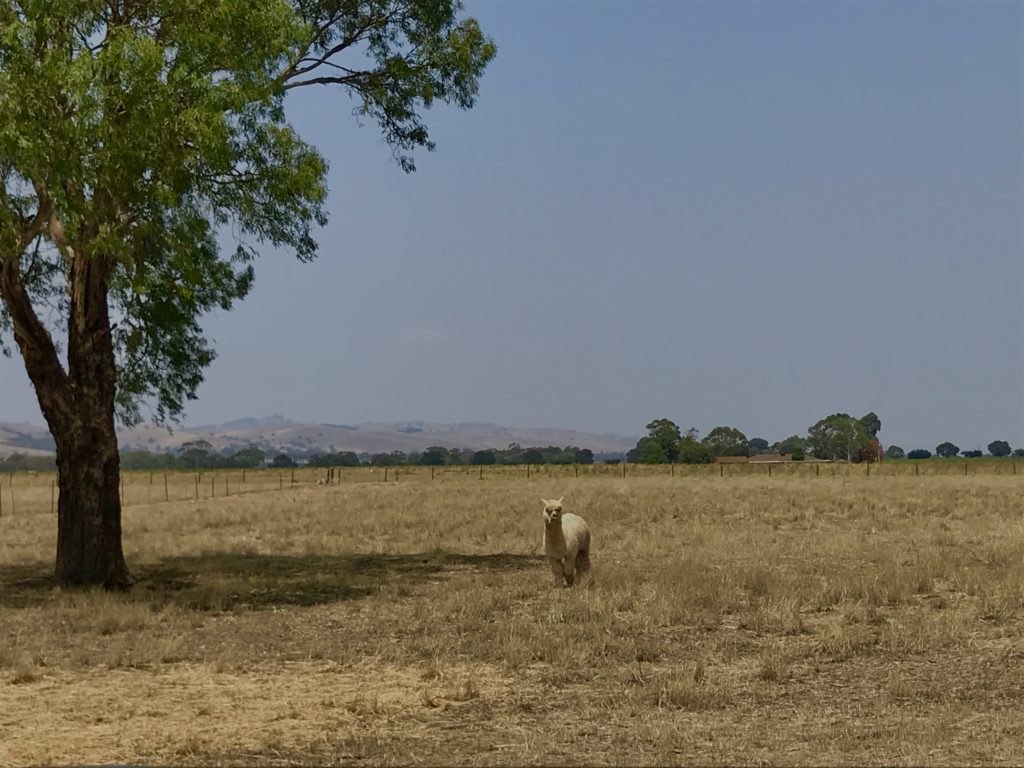Every morning on our drive to the gym, we pass a field inhabited by a small flock of sheep and one lonely alpaca.
They’re all the same size and the same color, and other than the alpaca’s longer neck, they look very similar. Yet the alpaca seems to know it’s different than those other creatures because while they stick close together, it almost always stands a short distance away.
We’ve heard stories that sheep owners keep an alpaca or two to protect their sheep from predators. But it seems hard to believe because the alpacas have no fangs nor claws and seem to be just as timid as their charges.


So I headed over to Wikipedia to find out more. I’ll be damned. It’s true:
A guard llama is a llama, guanaco, alpaca or hybrid that is used in farming to protect sheep, goats, hens, or other livestock from coyotes, dogs, foxes and other predators. In the past, a single gelded (castrated) male was recommended. In more recent years it has been discovered that single, unbred females make better and safer guardians.
How, you may ask, do they do it?
Guard llamas may defend against predators in many ways. Llamas are instinctively alert and aware of their surroundings, and may draw attention to an intruder by making a startling alarm call that sounds like a rusty hinge. They may walk or run toward an intruder, and chase or kick or spit at it. Others may stand apart from the group and watch the intruder. Although llamas have been known to kill predators (such as coyotes), they should not be considered attack animals. They are generally effective against single intruders only, not packs … Not every llama will guard, however, and it should not be assumed that because it is a llama it will guard.
Research suggests the use of multiple guard llamas is not as effective as one. Multiple males tend to bond with one another, rather than with the livestock, and may ignore the flock. A gelded male of two years of age instinctively bonds with its new charges and is very effective in preventing predation. Some llamas appear to bond more quickly to sheep or goats if they are introduced just prior to lambing. Many sheep and goat producers indicate a special bond quickly develops between lambs and their guard llama and the llama is particularly protective of the lambs.
Most research on the effectiveness of guard llamas has been done with sheep. A 1990 study reported that 80% of sheep producers with guard llamas rated them as effective or very effective. The study found average rates of loss to predators fell from 21% to 7% after the introduction of a guard llama. In other studies, over half of guard llamas completely eliminated losses due to predators. Dogs and coyotes have been injured and even killed by llamas.
In other words, a guard alpaca is very much like Jamie — cute, but very dangerous if you piss her off.
Long blog but the last sentence was worth the . ploughing thru.?
I live in fear, Wendy.
Halfway through I was thinking the same. But you, of course, said it better.